Safe Assets: Develop a safe, efficient and low-cost automated cleaning solution for hard-to-access areas at MRT stations and depots without the need to use scaffolding, suspended gondolas, boom lifts or rope specialists
Background
Access to external facades of MRT stations is usually obstructed by public infrastructure such as covered linkways, trees, lamp posts or bicycle parking areas. Boom lift may not be able to be deployed to reach the façade. Boom lifts cannot be parked on the green verge as the ground may settle and cause the boom lift to tilt.
Skylights and claddings inside stations need to be cleaned by men standing in personnel lifts or scaffolding using long poles. When the skylight is over the escalator and staircase void, rope specialists (spider men) will need to be used, by deploying an abseiling technique with ropes hooked from anchors. For safety, these anchors must be checked and certified yearly and this adds to the maintenance cost.
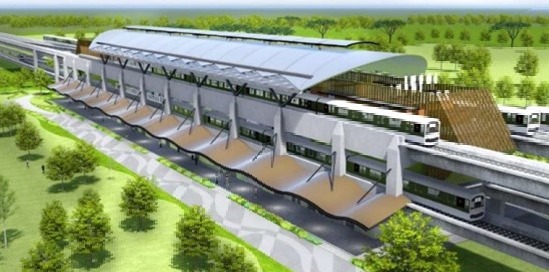
Skylights and claddings inside stations need to be cleaned using long poles or men standing in personnel lifts or scaffolding inside the station. When the skylight is over the escalator and staircase void, rope specialists (spider men) will need to be used. The abseiling technique uses ropes hooked onto anchors. These anchors must be checked and certified yearly and this adds on to the maintenance cost.

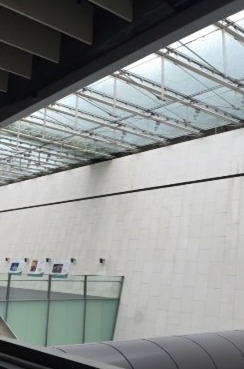
For glass claddings, cleaning using long pole may not cover 100% and leaves water stains. Stainless steel side panels for long escalator are not able to be thoroughly polished or evenly cleaned thus leaving streaky mark.
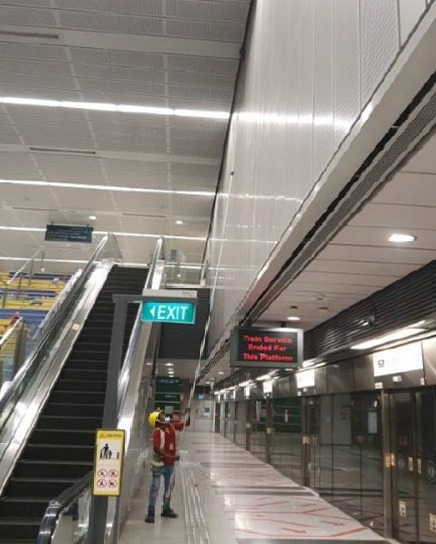
Hence, cleaning and washing of station/depot façade is difficult, if there is no proper access around the building for boom lift or cherry picker. Maintaining claddings and skylights inside stations between 4m-20m high is difficult and even more so when it is beside a void. Cleaning by rope specialists is expensive.
Thus far, only the manual cleaning methods described above have been used.
Requirements
The proposed solution should overcome the above stated challenges to clean the external and internal walls/claddings of rail stations and depots in an effective, safer, more efficient and low-cost manner.
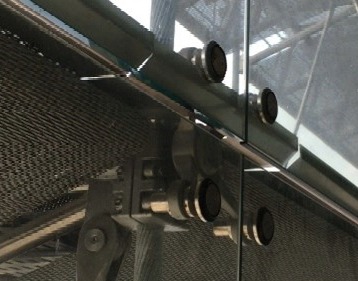
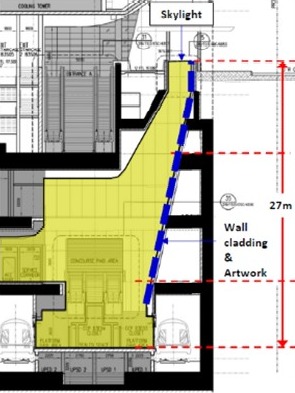
These are the technical requirements:
- Must be portable and easy to deploy. Be carried by 1 or 2 men.
- Can be easily transported by vehicle to the next station.
- Can tap on electrical switch socket outlets in stations.
- Suitable to clean glass, aluminium and vitreous enamel claddings.
- Can map out the co-ordinates (surface area) to ensure that every part of the surface is cleaned.
- Equipment must navigate around mullions or spider clamps (pls see attached) which may obstruct its passage.
- Can operate on slopes more than 60⁰ from horizontal on external façades and internal claddings.
- To have local O&M support.
- Equipment should not fall off the wall and should not need to employ rope specialists to tether any securing ropes from anchors.
- For external façade, wet cleaning is required. For internal claddings, dry wipe is allowed as a solution. If water spray is used for internal cladding, there will be a need to keep the floor dry.
- We do not want an unmanned aerial vehicle solution as it requires CAAS permit for outdoor.
A prototype that can perform the stated functions and able to achieve the Measures of Effectiveness stated below compared to manual solution using the following as a testbed.
- One external building façade, >10m high (which currently require gondola or boom lift)
- Two stations internal façade, > 8m high (which currently require scaffolding or gondola)
Desired Outcome
- Cleaning effectiveness: As clean as existing cleaning methods or better
- Skilled manpower: Avoid the need for rope specialists for cleaning operation
- % savings in cost: >33% savings of CAPEX +OPEX compared to current method over the useful life of the proposed solution
- % savings time duration: Lesser time to clean the same surface compared to current method use
- % savings in number of workers: >50% or no more than 4-man team
The immediate users are the maintenance teams of the rail PTOs (Public Transport Operator). Prototype can also be deployed for any buildings with facades in Singapore or internationally.
Development Timeframe
12 months to 18 months
Additional Info
Development funding of up to 80%* of qualifying project cost, which includes pilot sites, user guidance and information related to the problem statement.
*Till end of March 2022
Xcite Innovation Call
Proposal submissions are open from 3 Sep 2021 09:00AM to 15 Nov 2021 06:00PM
